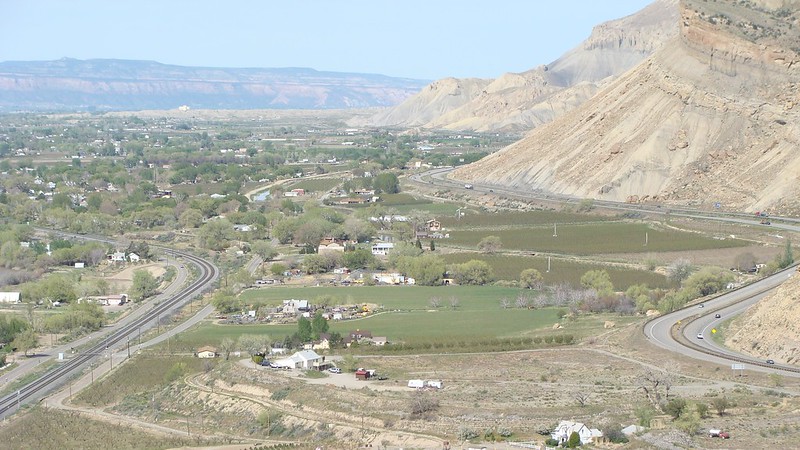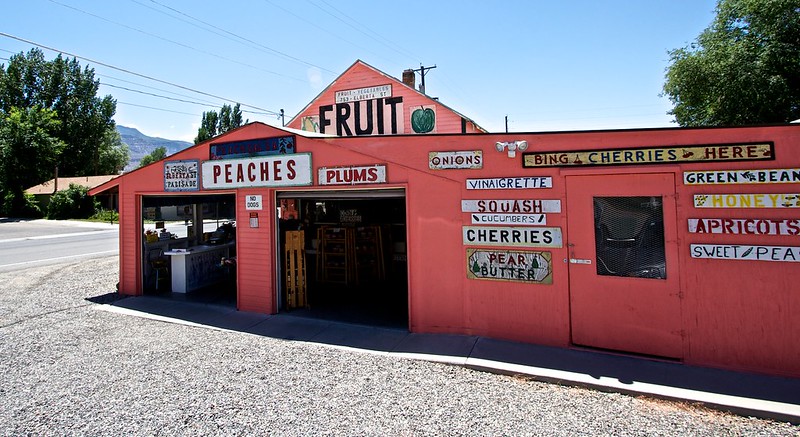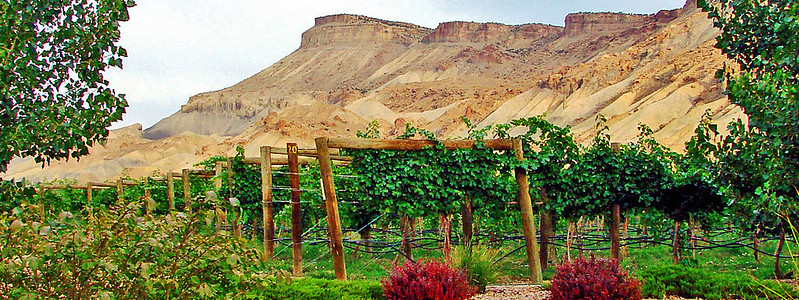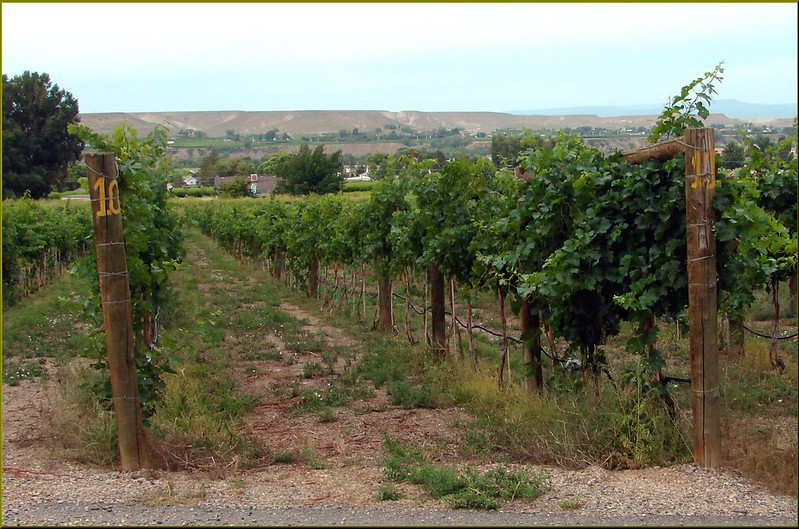Palisade, Colorado has an elevation of 4,718 feet (or 1,441 meters) above sea level. (I’m taking this from sources, as my tape measure broke).

This makes Palisade roughly about 9/10 of a mile above the ocean. The charming little town where my grandpa and grandma used to live is surrounded by higher hills, odd geological formations and sits at the base of the Grand Mesa, at 11,000 feet, which is the world’s largest flat top mountain.
Visitors come to Palisade for peaches, mountain biking, and wine tours, but should know that the altitude may affect you, especially if you plan on hitting up one of the 30 wineries in the Grand Valley. More on that below.
Palisade, Colorado Elevation
Compared to most of the rest of Colorado, which has an average elevation of 6,800 feet above sea level, Palisade is Death Valley.
It’s not the lowest point in Colorado (that honor belongs to a point on the Kansas/Colorado border at 3,317 feet), but it is nearly a 1/3rd lower than the average point in Colorado.
Palisade, Grand Junction and Fruita (known together as “The Grand Valley” is classified as a high desert region, with an arid climate.
It’s a sharp contrast if you drive from Grand Junction to Vail, (much colder with the town at just over 8,000 feet), or three hours southeast to Telluride, where the top of the ski area sits at 13,500 above sea level.
Still, if you’re coming from a much lower elevation, the 4,718 foot elevation of Palisade may affect you more than you think.

As an asthmatic, and Colorado native, I have to use an inhaler when exercising, as opposed to our trips in Florida, when it seems I can run around forever like I’m 16 again. .
Highest and Lowest Altitude in Palisade
The town itself is pretty small in land size (1.19 square miles), but stretches from 34 Road on the west end, to Debeque Canyon, and from the Colorado River to the mesas and hills just east of town. Still, the overall elevation of Palisade only fluctuates a few hundred feet high and low from the official 4,718 feet altitude figure.
Palisade Elevation’s Impact on Peaches and Grapes
The elevation plays an impact on our famous peaches and wine, giving our peaches an especially sweeter taste that gives them a huge leg up on Georgia peaches (in my very biased opinion.)
There are over 1,000 acres of vineyards in Palisade and there are tens of thousands of peach trees. The Palisade Chamber of Commerce says there are 500,000 peach trees, but I can’t wrap my head around that, and have a hard time believing it. (I could be wrong).
Either way, Apparently the combination of hot days and crisp cool nights here gives our peaches and grapes a special type of sweetness.
Palisade’s high altitude makes it part of a unique microclimate that assists grape cultivation, due to the fact the cooler nighttime temperatures help grapes maintain acidity. That, combined with warm sunlight during the day, apparently promotes sugar development, resulting in well-balanced wines and peaches.

The downside of growing at elevation like Palisade of course, is the threat of crops being killed off by a late spring freeze. Every spring here in the Grand Valley, farmers and growers have to worry about a late cold snap after trees and vines begin to bud.
My dad has a friend who grows peaches who is either buying a new boat every summer or getting a loan, depending on how the spring weather impacted his orchard.
The large tall fans you may see when driving around orchards and vineyards are there to effectively, blow away the freezing air, and keep those frozen temperatures from settling onto the crops.
Impact of Palisade’s Elevation on Wine Tasting
Those coming from lower altitudes who plan on enjoying a glass of Cabernet Franc or two or three should know that Palisade’s elevation can subtly influence your body’s response to alcohol.
At higher altitudes, there is lower oxygen in the air you breathe, which in turn results in alcohol more quickly being absorbed into the bloodstream.
In layman’s terms: you get drunk faster.
This means that you should stay hydrated. In Between glasses of Riesling, you should mix in some Syrah.
I’m kidding. I’ll be your protective dad and tell you to moderate your wine consumption while drinking plenty of water.

The same general advice applies to low-landers who plan on biking or hiking in Palisade. Allowing some time for acclimatization may be of great benefit. Hey, it sometimes works for those team going to Denver to play my Broncos.
Or course, many visitors to Palisade don’t have to worry about the altitude affecting them as they are actually going down in elevation when arriving in the Grand Valley.
Various estimates of the tourist traffic show roughly 70% of them come from the Front Range (i.e. Denver, Ft. Collins, Colorado Springs), all of which are cities higher in elevation than Palisade.
The Palisade Plunge Elevation
This mountain biking and hiking trail represents my type of biking: going downhill.
It represents the extreme elevation changes you can experience in a visit to Palisade, starting at the top of the Grand Mesa, and descending into town.
In fact, when starting at the top, you drop over a mile in elevation – about 6,000 feet according to the BLM map.
There are companies that can you shuttle you to the top of the Mesa to begin your ride. The 32 mile trail ends at the trailhead and staging area a mile ride from downtown Palisade.
(Related: Go here to see Palisade Webcam)
It offers incredible views of the valley, with a gorgeous contrast between the red rocks of the surrounding desert and the plush green farmland below.
(By Steve Beauregard. Photos copyright GJFruita.com)
